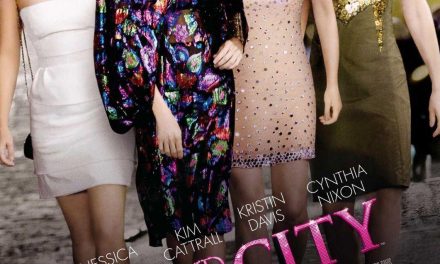I quite often think of myself as an old-fashioned structuralist (as my 1981 essay on narrative and Coronation Street showed) and am quite embarrassed to think about the number of first year students I attempted to introduce to the wonders of Todorov. So I should be more interested than I am in the relentless march of screenwriting manuals with their advice about the three act structures, inciting incidents, narrative arcs and characters going on a journey. But actually I am pretty much averse to such works with their universal archetypes and rigid rules. My attachment to Todorov rests on the flexibility with which you can apply and learn from his structural frameworks while Robert McKee et al seem to want to impose formulae.
Most of this screenwriting advice relates to Hollywood cinema but recently I decided to try what I hoped was a television version of a practitioner structuralist approach. This was the book Into the Woods by John Yorke (Penguin Books, 2014) which, I later learned, has become the basis of a number of scriptwriting courses and workshops.

I had hopes that this might address some of the problems of applying structural frameworks developed out of single dramas to television stories which run across a number of episodes, disappear from the schedule and re-appear or which have no ending (or at least depend on the possibility that any temporary ending can be reversed or upended). Yorke is a highly influential figure in British television. He is the former controller of Controller of BBC drama production and new talent and a former head of drama at Channel 4; he has worked on or commissioned shows like EastEnders, Life on Mars, and Shameless. He’s currently managing director of independent TV producers Company Pictures, recently responsible for The Missing and Wolf Hall for BBC1 and BBC2 respectively.
So Yorke should be able to tell us something about narrative and television but as I read on I became more and more disappointed. For although Yorke is critical of predecessors like McKee his emphasis seems to be much the same, an attempt to prove that there in a universal story which answers a universal need. In a newspaper article he summarized it like this
‘ What an archetypal story does is introduce you to a central character – the protagonist – and invite you to identify with them . . . So you have a central character, you empathise with them, and something then happens to them, and that something is the genesis of the story.’
The character, as if in a fairy tale, goes into the dark woods and
‘The story is the journey they go on to sort out the problem presented. On the way they may learn something new about themselves; they’ll certainly be faced with a series of obstacles to overcome; there will be a moment near the end where all hope seems lost, and this will almost certainly be followed by a last-minute resurrection of hope, a final battle against the odds, and victory snatched from the jaws of defeat.’
This may sound familiar and so too will be the characters the story involves – the protagonist and the antagonist who are diametrical opposites – and the five act structure with its inciting incident, its crisis and its climax. There is not so much one single story as one single story shape of thesis, antithesis, synthesis; of flaw, challenge, resolution.
I won’t go into the detail of how this is demonstrated but I want to make a few points which might be of interest to television scholars.
- Yorke’s thesis is overwhelmingly based on drama and films rather than television. Although television programmes do provide examples, the argument is much more likely to fall back on Hamlet or The Godfather. Bad use of dialogue is exemplified by Holby City, good by Apocalypse Now. And when he does turn specifically to television, he seems to fall back on assertions rather than argument drawing on detailed examples. Instead of looking at how and why television narratives might do storytelling differently, his emphasis is on the inevitable failure of long stories: ‘characters have only one story, and all attempts to counter that are a lie’ (184). So far as series are concerned, ‘there’s a striking pattern to it: year one is initial enthusiasm, year two consolidation, year three is “what on earth do we do now?”’ Those who blame Yorke for the prolongation of the life of BBC1’s Casualty and Holby City might agree with this but the argument seems to be based more on the thesis he has developed from single dramas than on evidence from the programmes.
- It’s really unclear what happens when we have multiple protagonists as is often the case in long television narratives. ‘From Line of Duty to Moby-Dick, Dr Faustus to Lolita (“good” is a relative concept), there’s a clear pathway the characters follow as, in pursuit of their goal, their moral centre collapses’, Yorke argues, but isn’t there a difference in Line of Duty when the pathway is being traversed by a range of characters pursuing their goals at different points in the overall story? And what happens in soaps when characters move in and out of prominence and their status as protagonist is shaken?

- The drive for repetition which Yorke does endorse is actually less about the single story shape itself but the commitment and energy it can engender in an audience. ‘We crave stories like a drug’ (231) he tells us at the end and it seems that the repetition of the story formula (the shock of the inciting incident, the despair of the lowest point, the triumph of climax and the quiet of resolution) aims to induce a repeated emotional response in the audience. This is reinforced by Yorke’s insistence that the emotional pattern works not just across the whole story but is repeated in each act and then in each segment and each scene. So the repetition that Yorke advocates in storytelling is that involved in getting to and recovering from an intense emotional high and it is hammered home in each narrative element.
- Certainly this kind of thinking might explain the ever-more frenetic storytelling of EastEndersand Coronation Street. And Yorke did give one example of this which made perfect sense. He tells us that while each scene should replicate for the audience the emotional journey of the whole, elements of it can be assumed and therefore missed out. The set-up can be carried from the previous scene and the climax and resolution left to be imagined/played out later. ‘Indeed, it’s possible for each scene to consist solely of the period of confrontation. Done well the drama is then built around confrontation/crisis in a sequence that never seems to stop moving’ (95) and a crisis point is left hanging at the end of every scene. No-one wonder people sometimes complain that EastEnders consists of nothing but people shouting at each other. And that at times the strongest emotion generated when watching it is exhaustion.


Maybe I haven’t been quite fair to Yorke’s book and certainly I will go back to it again. He does know that many writers including Tony Jordan and Jimmy McGovern resist the notion of a single shape (though he believes they follow it anyway) and he does state that the pattern can’t be followed mindlessly. But there is no doubt that he is pressing for writers to understand this phenomenon so that they can use it. There seems to be little room for the particularities of television narrative and little discussion of the consequences of all screenwriters following this map into the woods.
You can find John Yorke in action here.
Christine Geraghty is an Honorary Professorial Fellow at the University of Glasgow. Her publications on television include a contribution to the 1981 BFI monograph on Coronation Street; Women and Soap Opera (Polity, 1991); and My Beautiful Laundrette (I B Taurus, 2004). Her BFR TV Classic on Bleak House was published in 2012 and her reflections on the beginning of her work on soap opera appears in ‘The BFI women and film study group 1976 – ?’, Renewing Feminisms, Radical Narratives, Fantasies and Futures in Media Studies H. Thornham and E. Weissmann (eds) I B Taurus 2013. She is on the editorial board of the Journal of British Cinema and Television and sits on the advisory boards of a number of journals, including Screen.





